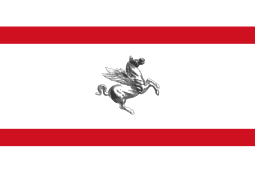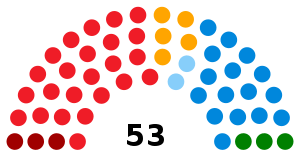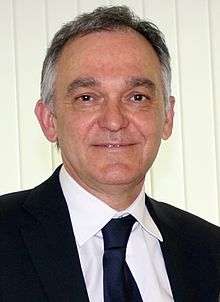2010 Tuscan regional election
The Tuscan regional election of 2010 took place on 28–29 March 2010.
| |||||||||||||||||||||||||||||||
All 53 seats to the Regional Council | |||||||||||||||||||||||||||||||
|---|---|---|---|---|---|---|---|---|---|---|---|---|---|---|---|---|---|---|---|---|---|---|---|---|---|---|---|---|---|---|---|
| |||||||||||||||||||||||||||||||
| |||||||||||||||||||||||||||||||
 |
|---|
| This article is part of a series on the politics and government of Tuscany |
|
After two consecutive terms, Claudio Martini of the Democratic Party chose not run for a third term. His successor Enrico Rossi defeated by a landslide his centre-right opponent Monica Faenzi. The Democrats were by far the largest party, albeit losing ground from previous elections.
Minor candidates who were running were Francesco Bosi for the Union of the Centre, Alfonso De Virgilis for the Italian Radicals and Ilario Palmisani for New Force.
Electoral law
Tuscany uses its own legislation of 2004 to elect its Council. The councillors are elected in provincial constituencies by proportional representation using the largest remainder method with a Droop quota and close lists.
In this system parties are grouped in alliances, and the alliance which receives a plurality of votes elects all its candidates, its leader becoming the President of Tuscany.
Council apportionment
According to the official 2001 Italian census, the 33 Council seats which must be covered by proportional representation are so distributed between Tuscan provinces; the highest number of candidates in each list by province is this:
| AR | FI | GR | LI | LU | MS | PI | PT | PO | SI |
|---|---|---|---|---|---|---|---|---|---|
| 6 | 17 | 4 | 6 | 7 | 3 | 7 | 5 | 4 | 4 |
The allocation is fixed. Remaining seats and votes after nominal distribution, are all grouped at regional level and divided by party lists. The consequent division of these seats at provincial level usually change the original apportionment.
Results
2010 election led to the return to the guide of the Region, democratic Enrico Rossi, supported by the center-left coalition.
If the mechanisms of electoral law generated a Regional Council very similar to the incumbent one speaking about coalitions, the most relevant change was the new three seats conquered by Lega Nord Toscana, which obtained its best performance ever.
The Democratic Party was confirmed as the largest party in the region with 42% of the vote, despite a decline of six points, while The People of Freedom took the 27%. This race is the only one in which the center-left coalition improved its performance than the 2005 election.
 | |||||||||
| Candidates | Votes | % | Seats | Parties | Votes | % | Seats | ||
|---|---|---|---|---|---|---|---|---|---|
| Enrico Rossi | 1,055,751 | 59.73 | 1 | ||||||
| Democratic Party | 641,214 | 42.20 | 23 | ||||||
| Italy of Values | 143,194 | 9.42 | 5 | ||||||
| Federation of the Left – Greens | 80,017 | 5.27 | 3 | ||||||
| Left Ecology Freedom | 57,815 | 3.81 | – | ||||||
| Total | 922,240 | 60.70 | 32 | ||||||
| Monica Faenzi | 608,680 | 34.44 | 1 | ||||||
| The People of Freedom | 412,118 | 27.12 | 15 | ||||||
| Lega Nord Toscana | 98,523 | 6.48 | 3 | ||||||
| Total | 510,641 | 33.69 | 19 | ||||||
| Francesco Bosi | 81,106 | 4.59 | 1 | Union of the Centre | 72,548 | 4.77 | 1 | ||
| Alfonso De Virgiliis | 13,892 | 0.79 | – | Bonino-Pannella List | 8,414 | 0.55 | – | ||
| Ilario Palmisani | 7,980 | 0.45 | – | New Force | 5,588 | 0.37 | – | ||
| Total candidates | 1,767,409 | 100.00 | 3 | Total parties | 1,519,431 | 100.00 | 50 | ||
| Source: Ministry of the Interior – Historical Archive of Elections | |||||||||

